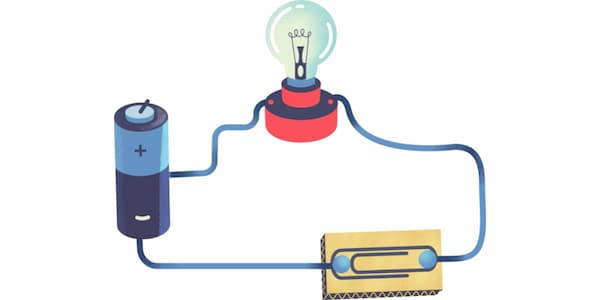
Electric blankets are a good way to stay warm and cozy during cold nights or winter weather. However, what happens when you want to use your electric blanket in a location where there’s no power source? This is where running an electric blanket off battery power can come in handy.
Whether you’re camping, traveling, or experiencing a power outage, knowing how to power your electric blanket with a battery can help you stay comfortable and warm.
In this blog post, we’ll discuss the key steps for running an electric blanket off battery power, including choosing the right battery and setting up the battery. We’ll also provide maintenance and safety tips to keep you safe and maximize the battery life.
Types of Batteries To Use With An Electric Blanket
Here are a few types of batteries that can be used to power an electric blanket. The choice of battery will depend on your specific needs and budget.
Lithium-ion Batteries
These are rechargeable batteries that are commonly used in smartphones, laptops, and other electronic devices. They are lightweight, compact, and have a high energy density, which means they can store a lot of energy in a small space. Lithium-ion batteries are a popular choice for powering electric blankets because they are portable and easy to recharge.
Lead-acid Batteries
These are traditional, rechargeable batteries that have been used for decades in cars and other heavy-duty applications. They are heavier and bulkier than lithium-ion batteries, but they are also more affordable and have a longer lifespan. Lead-acid batteries are a good choice for people who need a lot of power and are willing to sacrifice portability for affordability.
Nickel-metal Hydride Batteries
These are also rechargeable batteries that are commonly used in power tools, remote control cars, and other devices that require a lot of power. They are less common than lithium-ion and lead-acid batteries, but they are still a viable option for powering electric blankets. Nickel-metal hydride batteries are less expensive than lithium-ion batteries and have a longer lifespan than alkaline batteries.
Alkaline Batteries
These are non-rechargeable batteries that are commonly used in flashlights, toys, and other low-power devices. They are not suitable for long-term use with electric blankets because they have a low energy density and will need to be replaced frequently. However, they can be a good short-term solution if you need to power your electric blanket for a few hours and don’t have access to a rechargeable battery.
Choosing the Right Battery for an Electric Blanket
Running electric blanket off battery power is possible if you don’t have access to electricity. And getting the right battery is crucial to ensure that it can provide enough power to keep you warm and comfortable for an extended period of time. Here are some factors to consider when choosing a battery for your electric blanket:
1. Voltage.
The first thing you need to determine is the voltage requirement of your electric blanket. Most electric blankets operate at 12 volts or 24 volts, although some models may require a higher or lower voltage. Make sure to check the user manual or the product specifications to determine the voltage requirement.
2. Capacity.
The battery capacity is measured in ampere-hours (Ah) and refers to the amount of energy the battery can store. The higher the capacity, the longer the battery can power your electric blanket.
To calculate the required capacity, you need to know the power rating of your electric blanket in watts and the duration you want to use it. Divide the wattage by the voltage to get the amperage, and then multiply it by the duration to get the required capacity in Ah.
3. Size and weight.
The size and weight of the battery are also important considerations, especially if you plan to use your electric blanket while traveling or camping. A larger capacity battery will be heavier and bulkier, while a smaller battery may not provide enough power for extended use. Consider your specific needs and the portability of the battery when choosing the size and weight.
4. Type of battery.
As mentioned earlier, there are several types of batteries available, each with its own advantages and disadvantages. Consider the pros and cons of each type and choose the one that best fits your needs and budget.
5. Charging time and method.
If you plan to use a rechargeable battery, consider the charging time and method. Some batteries may require a specific charger, while others may be charged using a USB cable or a car charger. Make sure to choose a battery that is compatible with your charging method and that can be fully charged in a reasonable amount of time.
Setting Up the Battery System

To set up a battery system to power an electric blanket, you will need to follow these steps:
Step 1. Choose the battery. You will need to select a battery that can provide enough power to run your electric blanket. The type of battery you choose will depend on the power requirements of your blanket. You can use a deep cycle marine battery or a lithium-ion battery for this purpose.
Step 2. Determine the voltage requirement. Check the voltage requirement of your electric blanket. Most electric blankets require 12 volts DC.
Step 3. Purchase a power inverter. You will need to purchase a power inverter that can convert the DC power from the battery into AC power that can be used by your electric blanket. Make sure the power inverter you choose can handle the wattage of your electric blanket.
Step 4. Connect the battery to the power inverter. Connect the battery to the power inverter using a set of heavy-duty cables. Make sure the connections are tight and secure.
Step 5. Connect the power inverter to the electric blanket. Connect the power inverter to the electric blanket using the provided cord or plug. Make sure the connections are tight and secure.
Step 6. Test the system. Turn on the power inverter and test the system to make sure the electric blanket is functioning properly.
Step 7. Monitor the battery level. Lastly keep an eye on the battery level to ensure that the battery does not run out of power. Recharge the battery as needed to keep the system functioning.
Maintenance and Safety Tips
Here are some maintenance and safety tips to keep in mind when using a battery to power an electric blanket:
1. Follow the manufacturer’s instructions. Always follow the manufacturer’s instructions for both the electric blanket and the battery system. This will ensure that you are using the equipment correctly and safely.
2. Inspect the equipment regularly. Inspect the battery and power inverter regularly for signs of damage or wear. If you notice any damage or wear, replace the equipment immediately.
3. Store the battery properly. Store the battery in a cool, dry place and away from any flammable materials. Keep the battery away from children and pets.
4. Charge the battery properly. Charge the battery according to the manufacturer’s instructions. Overcharging or undercharging the battery can damage it and reduce its lifespan.
5. Monitor the battery level. Keep an eye on the battery level to ensure that the battery does not run out of power. Recharge the battery as needed to keep the system functioning.
6. Use the system in a well-ventilated area. Use the battery-powered electric blanket in a well-ventilated area to prevent the buildup of harmful gases.
7. Never modify the equipment. Do not modify the electric blanket or the battery system. This can be dangerous and may void the manufacturer’s warranty.
8. Turn off the system when not in use. Turn off the power inverter when the electric blanket is not in use. This will help conserve the battery’s charge and prolong its lifespan.
Following these maintenance and safety tips, you can ensure that your battery-powered electric blanket system is safe and reliable.
Related: Electric blanket not heating up? How to fix this problem.
So, can you run an electric blanket with a battery?
In conclusion, running an electric blanket off battery power is a convenient solution for those who want to enjoy the warmth and comfort of an electric blanket without access to a power outlet. With the right battery and power inverter, it’s easy to set up a system that can keep you warm and cozy even in remote or off-grid locations.
It’s important to follow the manufacturer’s instructions and take proper safety precautions when using a battery-powered electric blanket system. Regular maintenance and monitoring of the equipment, proper charging and storage of the battery, and using the system in a well-ventilated area are all essential for ensuring safe and reliable operation.
Keep these factors in mind and enjoy the benefits of a battery-powered electric blanket system and stay warm and comfortable wherever you go. Whether you’re camping, traveling, or simply looking for an alternative power source for your electric blanket, a battery-powered system can be a great option to consider.
